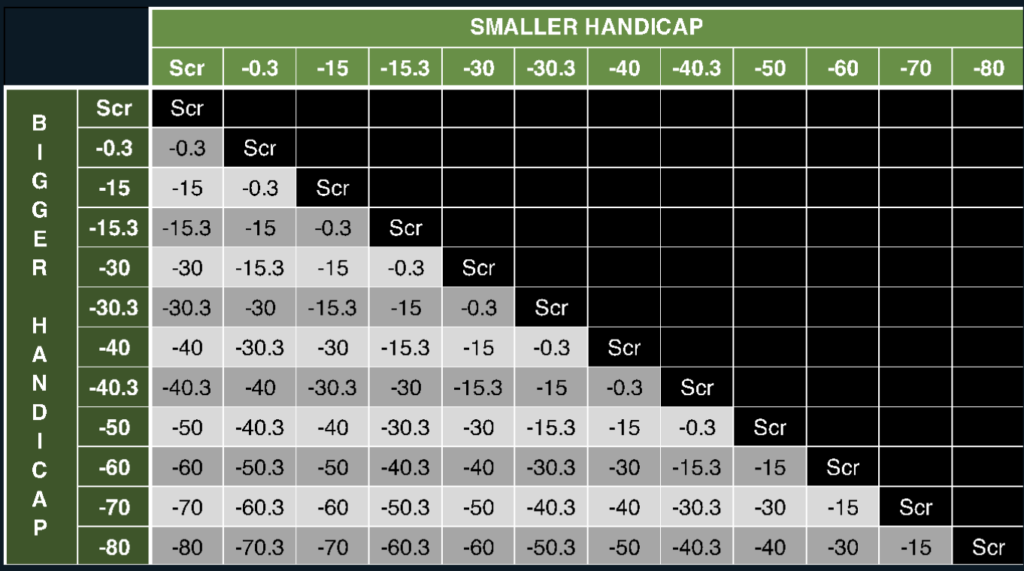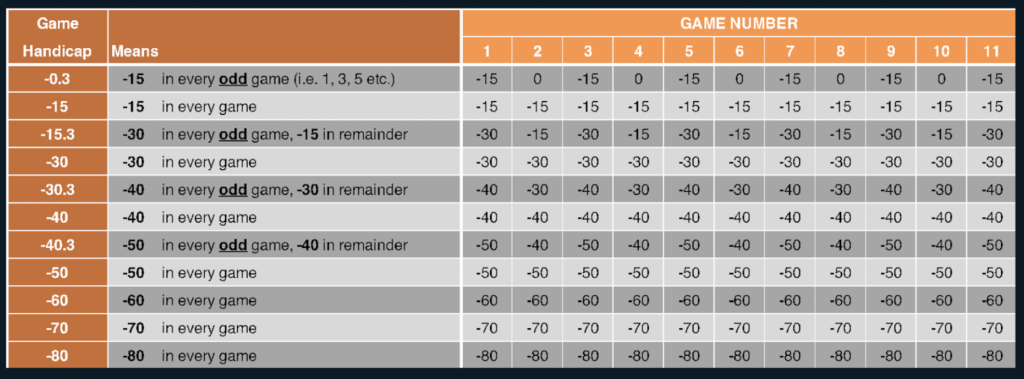Bective Tennis Handicap Rules Explained
- It is the responsibility of the player(s) named on the top line of a match to contact their opponents to organise a time to play.
- Courts must be booked in advance through Court Reserve.
- Players should be ready to commence play at time of booking. If matches overrun the scheduled time, the following booking must wait until match is completed.
- Results MUST BE TEXTED through to the Club Captain immediately after match.
- Tennis Handicaps should be netted off before commencement of play. For example, if Player A has a handicap of -40, and Player B has -15, the correct starting position for each game is: Player A -30, Player B Love
- It is not unusual in handicaps for the players involved to make an error, and serve to the wrong side or wrong opponent. Should this occur, continue the game as commenced.
- Matches are the best of 3 short sets: the first player or pair to reach 6 games wins the set, even if their opponent(s) have won 5 games. There is no tie-break.
- The winner of the point after deuce wins the game. In a game of singles, the receiver may choose the side to be served to. In a game of non-mixed doubles, the receivers may choose which of their players receives the serve. In mixed doubles, if the man is serving, the opposing man receives, if the lady is serving, the opposing lady receives.
A Bit More About Tennis Handicap System
In Tennis handicap events, the lesser-skilled player is given a certain number of points in each game. This is done so that players of different skill levels can have a competitive match. Each player/pair is designated a handicap.
- If both players / pairs have the same handicap, this cancels out and players just play a ‘normal’ game starting from 0!If players have different handicaps, the handicaps are “netted” .To work out your net handicaps for each match use Table 1
- e.g. Player A is -60, Player B is -15: the net handicap becomes Player A is -50, Player B is scratch (0)
- -60 means player A has to win 5 points to get to ‘0’ where player B has to win 1 – so there is a difference of 4 points
- If you are in the very lucky position to have a plus (+) handicap, e.g. +15 , this means that you have one point already won and your opponent’s handicap applies too!
- Where there are decimals (usually .3) all this means is that there will be one handicap for the 1st, 3rd, 5th games and a different one for the 2nd, 4th and 6th games
- To work out the starting score for each game, use Table 2
Table 1

Example 1 Tennis Handicap
- Player A has a handicap of -60
- Player B has a handicap of -15
- Read from left first @ -60 and read up to -15
- The split handicap is therefore -50
Other examples
- 30 versus -15 nets to -15 versus scratch (0)
- 30 versus -15.3 nets to -0.3 versus scratch (0)
- 30 versus +15 – no change
Other examples
- 30 versus -15 nets to -15 versus scratch (0)
- 30 versus -15.3 nets to -0.3 versus scratch (0)
- 30 versus +15 – no change
Table 2 Tennis Handicap

At the beginning of each set the handicap is reset and the first game of that set counts as the 1st game in the handicapping system.
Remember that a handicap score can change which side of the court you start from: if the handicap is an even number of points (e.g. -30 in a game) then you start as normal. If you have an uneven number (-15 etc) you start from the left side of the court!
